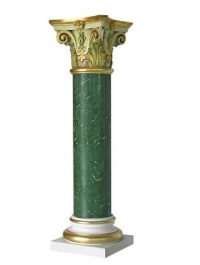
Faux Finishing and Marbleizing
There are a lot of Faux finishes and techniques since Ancient Greece and Ancient Rome era. Most common are : fresco (mural painting), Venetian plaster (to create smooth glass-like sheen with the illusion of depth and texture; Venetian plaster is one of the most popular and traditional plaster decorations. Venetian plaster techniques include marmorino, scagliola, and sgraffito, Marbleizing or faux marble (to imitate the appearance of polished marble)
read more

 REF. Num: CD 004
REF. Num: CD 004 






